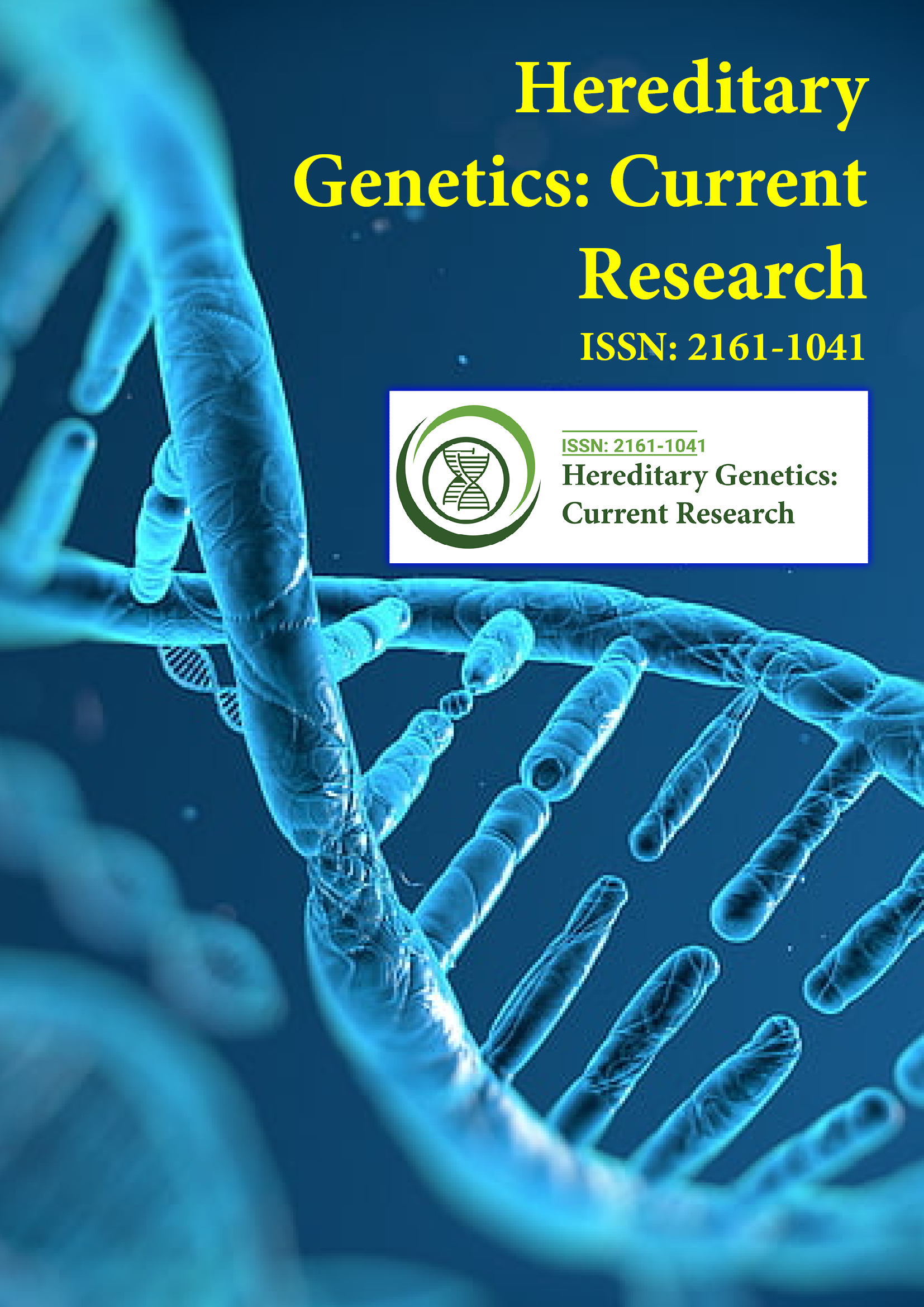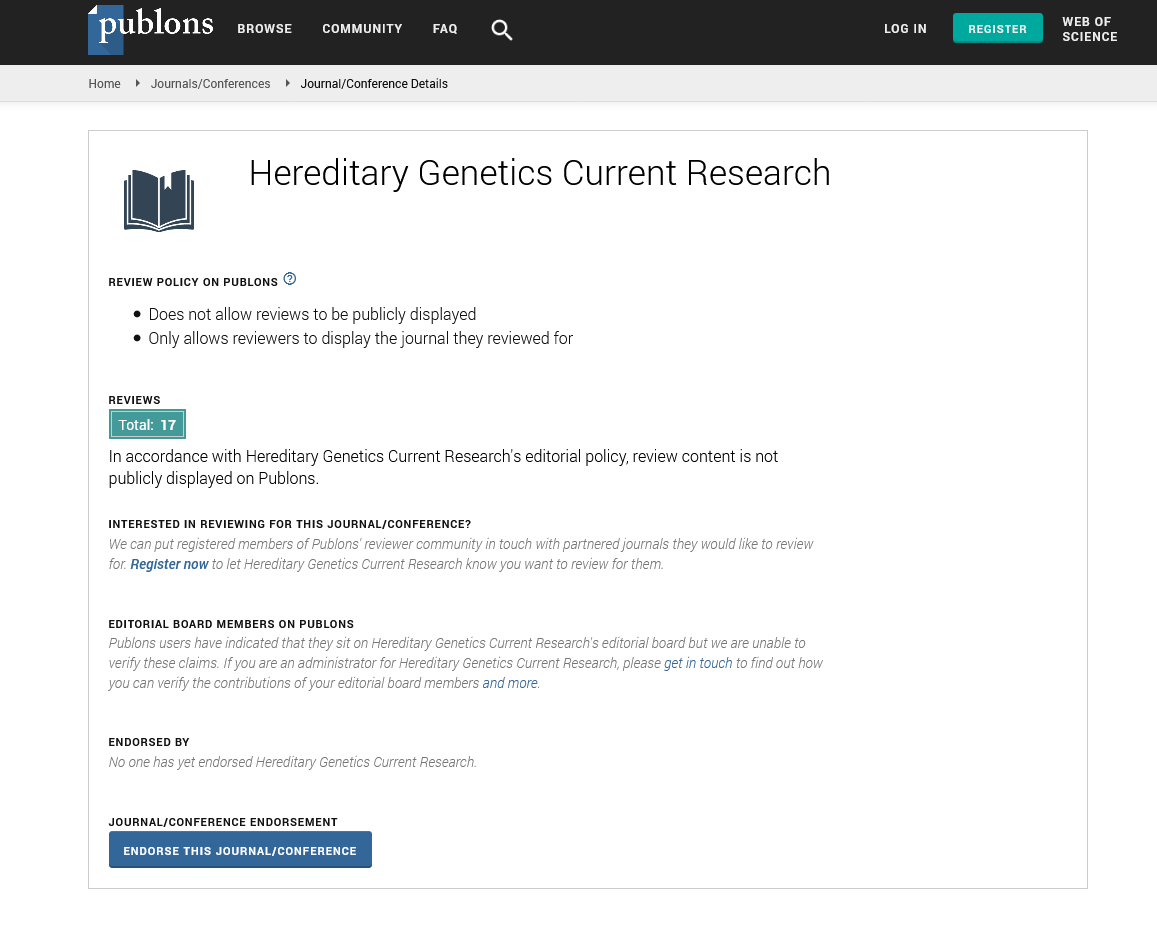Indexed In
- Open J Gate
- Genamics JournalSeek
- CiteFactor
- RefSeek
- Hamdard University
- EBSCO A-Z
- NSD - Norwegian Centre for Research Data
- OCLC- WorldCat
- Publons
- Geneva Foundation for Medical Education and Research
- Euro Pub
- Google Scholar
Useful Links
Share This Page
Journal Flyer

Open Access Journals
- Agri and Aquaculture
- Biochemistry
- Bioinformatics & Systems Biology
- Business & Management
- Chemistry
- Clinical Sciences
- Engineering
- Food & Nutrition
- General Science
- Genetics & Molecular Biology
- Immunology & Microbiology
- Medical Sciences
- Neuroscience & Psychology
- Nursing & Health Care
- Pharmaceutical Sciences
Editorial - (2021) Volume 10, Issue 5
Brief Description of the Y-Chromosome Markers
Ruth Gabriela*Received: 02-Sep-2021 Published: 23-Sep-2021, DOI: 10.35248/2161-1041.21.10.e203
Description
On the basis of the way of inheritance DNA markers can be classified as uniparental and biparentals. Mitochondrial and chromosomal DNA markers and are transmitted uniform; the former is maternally inherited, and the latter is sent by parents. Autosomal markers are transmitted by the two parents. The combination of allelic states of a series of polymorphisms found in the same DNA molecule (a chromosomal region) is called Haplotype. A haplogroup is a set of chromosomal haplotypes mtDNA or and slowly defined by mutilation polymorphisms.
Y-Chromosomal markers
The availability of almost complete chromosomal sequences, coupled with many new polymorphisms, high-resolution phylogeny and insight into their mutation process, now offers a new way of studying human evolution. Y chromosome research is advancing. The properties of the Y chromosome make it an abnormal value in the genomic region, half of which is made up of tandemly repeated satellite DNA and the rest carries very few genes and most of them do not recombine. For this reason, however, the Y chromosome is used to study recent human evolution from a male perspective, and it plays a professional but important role in medicine and forensic genetics. Although a small part of the Y chromosome, the pseudo-autosomal region, is recombined with the X chromosome, the rest is not recombined. Therefore, this non-recombinant part of the Y chromosome provides a second DNA region, and we can assume that it will not recombine. However, compared with the mitochondrial genome, the polymorphism of the Y chromosome is very small.
By convention, Y chromosomes are assigned to haplogroups or clades, those defined only by short tandem repeats are called haplotypes, and data descriptions that combine Y-STR and biallelic markers are called pedigrees. The Y chromosome carries a very diverse spectrum of mutations, i.e., The chromosomal changes that occur from generation to generation can be used as site or sequence-specific markers. Since all the markers are connected along the entire length of the Y chromosome (except for the pseudo-autosomal region), haplotypes constructed from many different markers actually record the history of the Y chromosome. Although the Y chromosome mutation rate is low and the mutations are difficult to find, mutations do occur very rarely.
In the haplogroup tree of the Y chromosome, two main divisions lead to haplogroups A and B, and their distribution is restricted to Africa. The remaining haplogroups form three sub-clusters that merge at the root of the CRM168 node and represent most of the African species and non-African haplogroups. This structural level of the continental pool of Y chromosomes includes the common haplogroup DE chromosomes in Africa and Asia, the non-African haplogroup C, which is widespread in East Asia, Oceania and North America, and another non- African haplogroup F M89, its most productive subgroup haplogroup K. There is an obvious haplogroup regionalization in the sub-branches of F and K. Haplogroups F* and H are strongly restricted to the Asian subcontinent, while haplogroups J and I focus in Europe and the Middle East, respectively are the most common. Other important K-linked haplogroups are Northeast Asia and America Q and African haplogroup R. Its phylogeny includes North Africa and West Asia, and appears frequently in Europe.
Citation: Gabriela R (2021) Brief Description of the Y-Chromosome Markers. Hereditary Genet. 10:e203.
Copyright: © 2021 Gabriela R. This is an open access article distributed under the terms of the Creative Commons Attribution License, which permits unrestricted use, distribution, and reproduction in any medium, provided the original author and source are credited.

